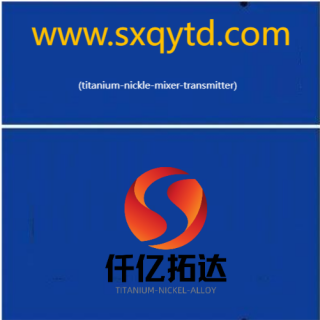Specification and size selection of nickel flat flange
[ 信息发布:本站 | 时间:2024-03-14 | 浏览:497 ]
Specification and size selection of nickel flat flange

Specification and Size Selection of Nickel Flat Flanges:
When selecting nickel flat flanges for a piping system, careful consideration of specifications and sizes is essential to ensure compatibility and optimal performance. Here are key factors to consider:
-
Flange Type: Nickel flat flanges are available in various types, including slip-on, weld neck, blind, socket weld, and lap joint flanges. Choose the appropriate type based on the application requirements, such as pressure rating, temperature, and installation method.
-
Material Grade: Select the appropriate material grade of nickel-based alloy for the flanges based on the corrosion resistance, temperature resistance, and mechanical properties required for the application. Common alloys include Monel, Inconel, and Hastelloy.
-
Size: Determine the size of the flanges based on the nominal pipe size (NPS) of the piping system. Nickel flat flanges are available in a wide range of sizes, typically ranging from 1/2" to 24" or larger, to accommodate different pipe diameters and pressure ratings.
-
Pressure Rating: Consider the pressure rating required for the piping system and select nickel flat flanges with a pressure class that meets or exceeds the system's operating pressure. Flanges are available in various pressure classes, such as 150, 300, 600, 900, and 1500 pounds per square inch (PSI).
-
Flange Facing: Choose the appropriate flange facing based on the sealing method used in the system, such as raised face (RF), flat face (FF), or ring-type joint (RTJ). The flange facing should match the facing of the mating flange to ensure proper sealing.
-
Thickness: Consider the thickness of the flanges required for the application, which depends on factors such as the pressure rating, temperature, and material grade. Thicker flanges may be required for higher-pressure applications to ensure structural integrity and safety.
-
Standards Compliance: Verify that the nickel flat flanges comply with relevant industry standards such as ASTM, ASME, and ANSI. Compliance ensures quality, performance, and regulatory adherence.
-
Customization Options: Some manufacturers offer customization options for nickel flat flanges, allowing for special dimensions, materials, surface finishes, and additional features to meet specific project requirements.
By carefully considering these specifications and selecting the appropriate size of nickel flat flanges, you can ensure compatibility, reliability, and durability within your piping system. Consulting with a qualified engineer or supplier can also help in making informed decisions regarding flange selection
Shaanxi Qianyi Tuoda Technology Co., Ltd;Email:qy002@sxqytd.com;WhatsApp +8618829679311
